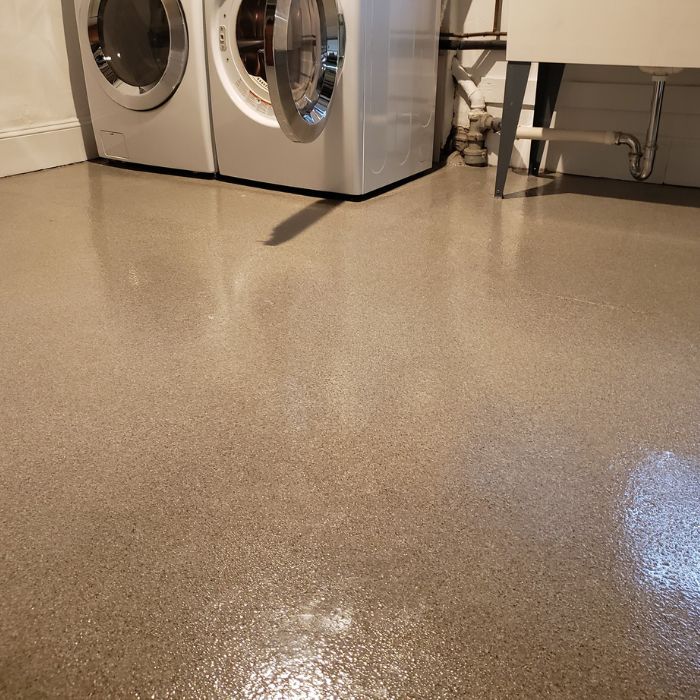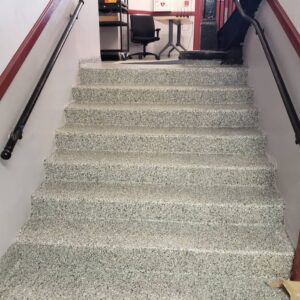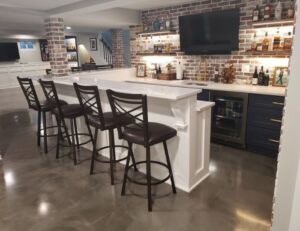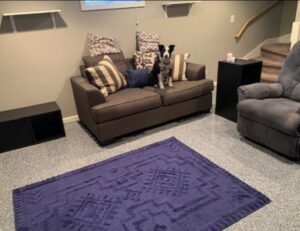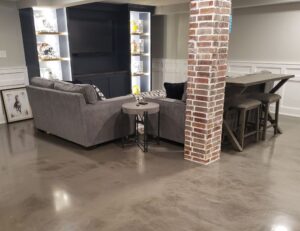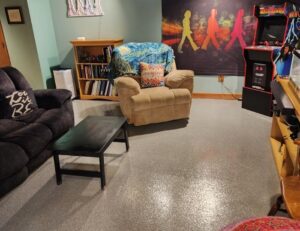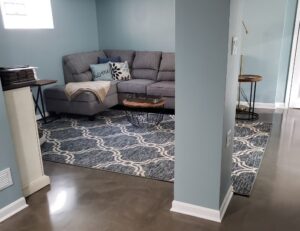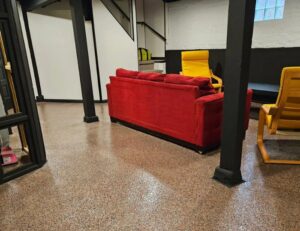Epoxy flooring has become one of the most popular options for basement renovations, and for good reason. It’s durable, resistant to stains and moisture, and gives the space a polished, professional look that’s hard to match with paint or standard sealers. If you’re considering this upgrade, understanding the process is key to ensuring a long-lasting and visually appealing result.
Why Epoxy is Ideal for Basement Floors
Basements often deal with moisture, heavy storage, and frequent foot traffic. Traditional paint can peel, and concrete sealer doesn’t offer much in the way of style. Epoxy, on the other hand, creates a hardened coating that resists water, chemicals, and abrasion. Beyond performance, it also allows for a range of finishes—from simple solid colors to decorative flakes or metallic effects—making it as stylish as it is functional.
Preparing the Concrete Surface
The success of an epoxy floor is entirely dependent on preparation. Basements typically have porous, unfinished concrete that requires careful cleaning and repair. Any cracks or chips need to be patched, and the surface must be free of dirt, grease, or old coatings. Many installers will grind or shot-blast the floor to open up the pores of the concrete, ensuring maximum adhesion. Skipping or rushing this step is one of the main reasons epoxy floors fail.
Applying the Epoxy Coating
Once the floor is prepped, epoxy application begins. The process usually involves several stages:
- Primer Layer – A primer helps the epoxy bond tightly to the concrete.
- Base Coat – The first epoxy coat provides the main color and forms the foundation of the system.
- Decorative Additions (Optional) – This could be vinyl flakes, metallic pigments, or quartz aggregate to achieve a specific look.
- Topcoat – A clear, protective topcoat seals the system, adding durability and resistance to wear, scratches, and chemicals.
Depending on the system chosen, curing can take from 24 to 72 hours before the floor is ready for light use.
DIY vs. Professional Installation
While hardware stores sell DIY epoxy kits, these are often thin coatings that lack the durability of professional-grade systems. Professional installation offers higher-quality materials, advanced preparation equipment, and skilled application techniques that ensure even coverage and long-term performance. For basements where durability and moisture resistance are critical, hiring experts is almost always the better investment.
Maintenance and Longevity
Epoxy floors are low-maintenance, requiring only sweeping and occasional mopping to keep clean. With proper installation, they can last 10–20 years without needing replacement. This makes epoxy one of the most cost-effective basement flooring solutions in the long run, especially when compared to alternatives like carpet, which can trap moisture and develop mold.
Transform Your Basement with Epoxy Flooring
If you’re looking for a durable, beautiful, and low-maintenance flooring option for your basement, epoxy is one of the best solutions available. At Broadleaf Inc., we specialize in professional epoxy installations that combine functionality with custom design. From moisture-resistant finishes to decorative styles, our team can help transform your basement into a usable, stylish space.
Ready to upgrade your basement? Contact Broadleaf Inc. today to schedule a consultation and get a custom epoxy flooring solution that lasts.

